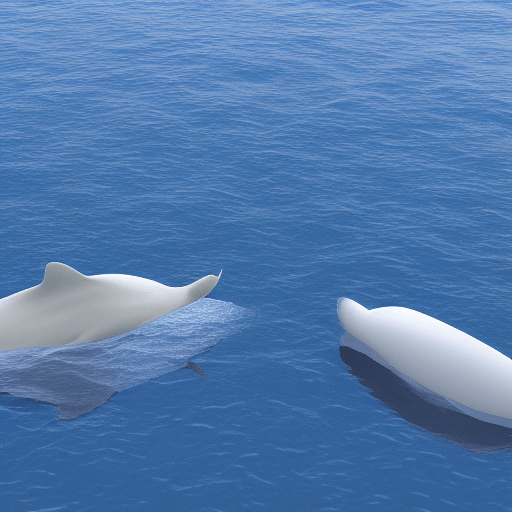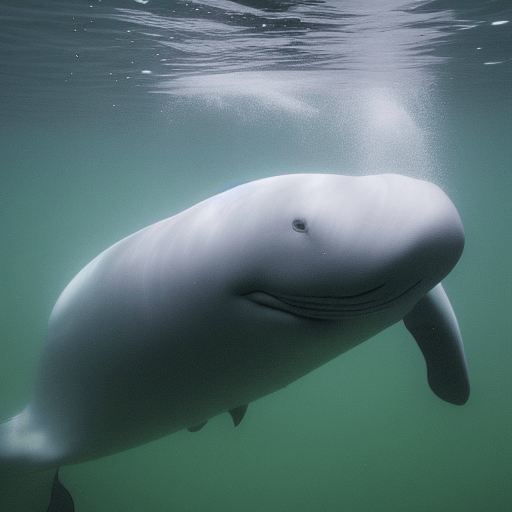Beluga Whale Skeletons – Do Beluga Whales Have Knees?
No, Beluga whales don’t have knees!
Beluga whales are some of the most fascinating creatures in the ocean.
They are unique among cetaceans for their ability to change color, and they are also one of the only species of whale that can make human-like facial expressions.
Let’s take a closer look at the beluga whale skeleton – and specifically, at those mysterious knees!
Throughout history, sailors have mistaken Beluga Wales for mermaids because of their human-like knees. pic.twitter.com/10hDV0aZCm
— We Like To Learn (@WeLikeToLearn) June 4, 2018
Beluga whales don’t actually have knees!
This photo went viral around the internet of a Beluga Whale taken from a unique angle that gave the impression the animal may have what appears to be knees. However, this is not accurate.
Photo Credit:
Explain It To A Child
Beluga whales don’t have knees. They can move their front and back limbs directly to their bodies, which makes them very flexible and able to swim through narrow spaces.
Their “knees” are actually just bones that protrude from their body because of how fatty their skin is. Although they don’t technically have knees, beluga whales are still able to move around by bending their bodies and using the protruding bones as support.
Do beluga whales have knees?
No, beluga whales do not have knees.
Their front and back flippers are attached directly to their bodies near their hips, and they lack the skeletal structure necessary for their knees.
This design helps them to be more efficient swimmers, as there is no joint that can be dragged through the water.
While this may seem like a disadvantage on land, belugas are able to use their strong flippers to pull themselves along.
In addition, the absence of kneecaps means that belugas can turn their tail flukes from side to side, which gives them greater maneuverability in the water.
All of these adaptations make belugas well-suited for life in the ocean.
Why do beluga whales look like they have legs?

Have you ever looked at a beluga whale and wondered why it looks like it has legs?
Actually, those aren’t legs- they’re flippers! All cetaceans, including whales, dolphins, and porpoises, have flippers instead of legs.
So how did beluga whales end up with flippers that look so much like legs?
The answer lies in evolution.
Millions of years ago, cetaceans were land animals with four legs. Over time, they began to spend more and more time in the water until they eventually became fully aquatic.
- However, their ancestors’ four-legged design made it difficult for them to swim efficiently.
- To solve this problem, nature took away their back legs and replaced them with extra-long front legs that could act as flippers.
- Over time, these front legs lost their bones and became streamlined to help the whale swim even faster.
- Today, beluga whales are fully aquatic creatures with no trace of their land-dwelling ancestors.
Their “legs” are actually just modified flippers that help them move through the water with ease.
Beluga whalebone skeleton structure

The beluga whale is a small to medium-sized whale that is easily recognizable by its characteristic white color.
These whales are found in the Arctic and sub-Arctic regions of the world and are well-adapted to life in the cold water.
One of the ways that belugas are able to withstand frigid conditions is by their bone structure.
Beluga whalebones are very dense, which helps to insulate the body and prevent heat loss.
In addition, the bones are connected by a network of blood vessels, which helps to keep the heat generated by the body from escaping.
As a result, belugas are able to maintain a high body temperature, even in the harshest conditions.
This unique bone structure is just one of the many adaptations that enable belugas to thrive in their cold water home.
What do we know about beluga whale skeletons-beluga whale knees?

Many people don’t know that beluga whales do not have knees.
People think they may have seen a picture of a beluga with what appears to be knees. But this is just a photo taken from a funny angle.
Their front and back limbs are attached directly to their bodies. This makes them very flexible and able to swim through narrow spaces.
Belugas are also able to rotate their heads up to 180 degrees. This is helpful for finding food and avoiding predators. The downside to this flexibility is that it makes it difficult for belugas to walk on land. If they are beached, they often cannot get back into the water without assistance.
However, if we look at a beluga whale skeleton, they are well-adapted for life in the ocean.
Their bodies are streamlined and their bones are lightweight. This helps them to swim quickly and maneuver easily in the water.
How do beluga whales move around without knees?

All mammals have bones in their legs that allow them to move their joints and bend their knees.
- However, beluga whales are a special case – they don’t have any bones in their legs at all!
- Instead, their front and back flippers are attached directly to their bodies by a thick layer of blubber.
- This unique design allows them to swim powerfully through the water, but it also means that they can’t walk on land.
- When beluga whales want to move around on solid ground, they have to use their flippers to “hug” themselves forward.
- It’s not the most graceful form of locomotion, but it gets the job done!
Thanks to their ingenious anatomy, beluga whales are able to live and thrive in both aquatic and terrestrial environments.
Why don’t beluga whales have dorsal fins?
Beluga whales are one of the most instantly recognizable types of whales, thanks to their distinctive white color and bulbous forehead.
However, belugas are actually quite different from other whales in a number of ways.
One of the most notable is that they do not have dorsal fins.
Instead, they have a series of ridge-like bumps running along their backs. There are a few theories about why this is the case.
- One is that it helps them to maneuver more easily in Arctic waters, where they are often surrounded by ice.
- Another is that it makes them more hydrodynamic, allowing them to swim faster and with less effort.
Whatever the reason, it’s clear that the lack of a dorsal fin is just one of the many things that make beluga whales so unique.
Article Sources
Jacks of Science sources the most authoritative, trustworthy, and highly recognized institutions for our article research. Learn more about our Editorial Teams process and diligence in verifying the accuracy of every article we publish.
